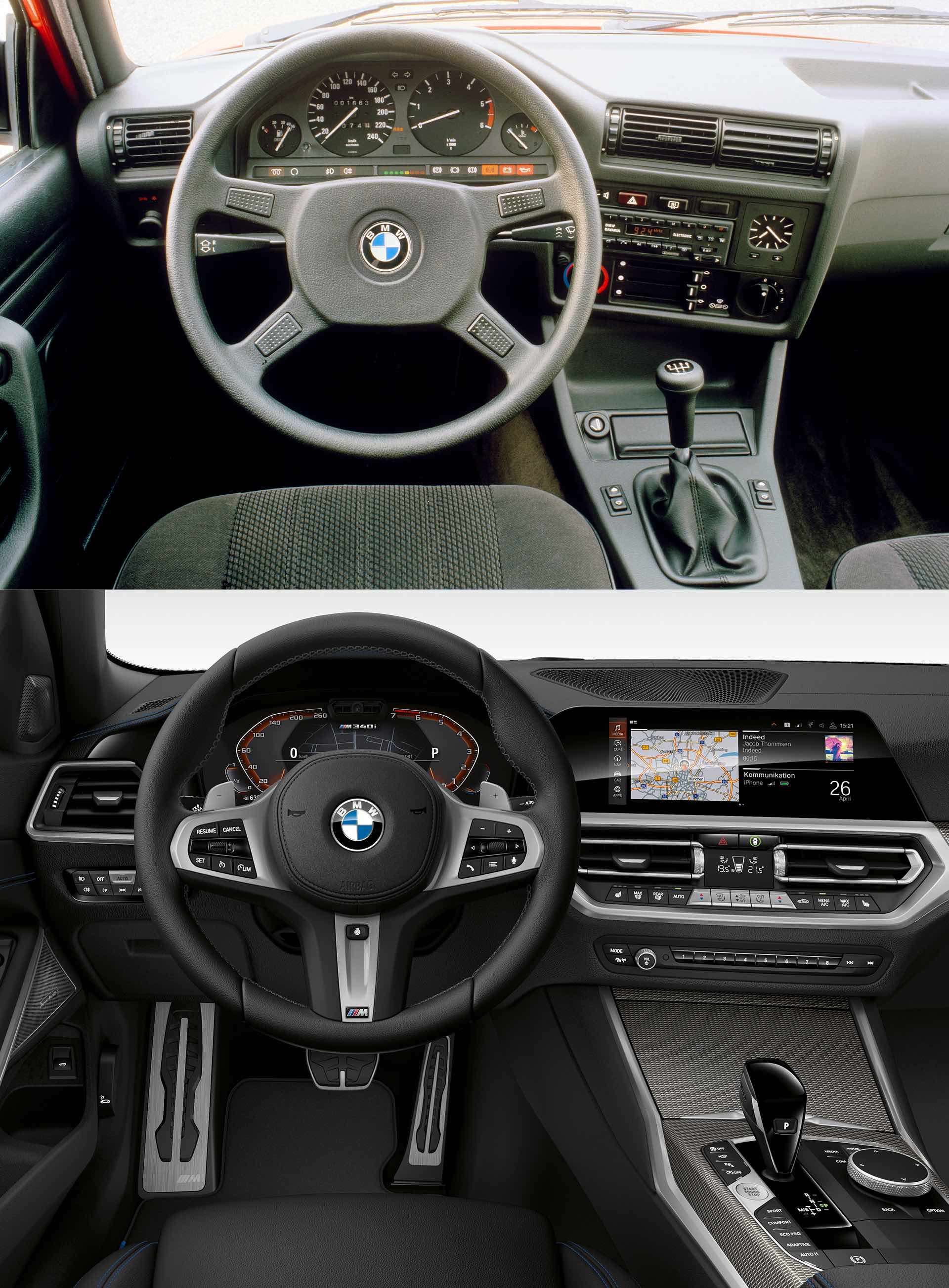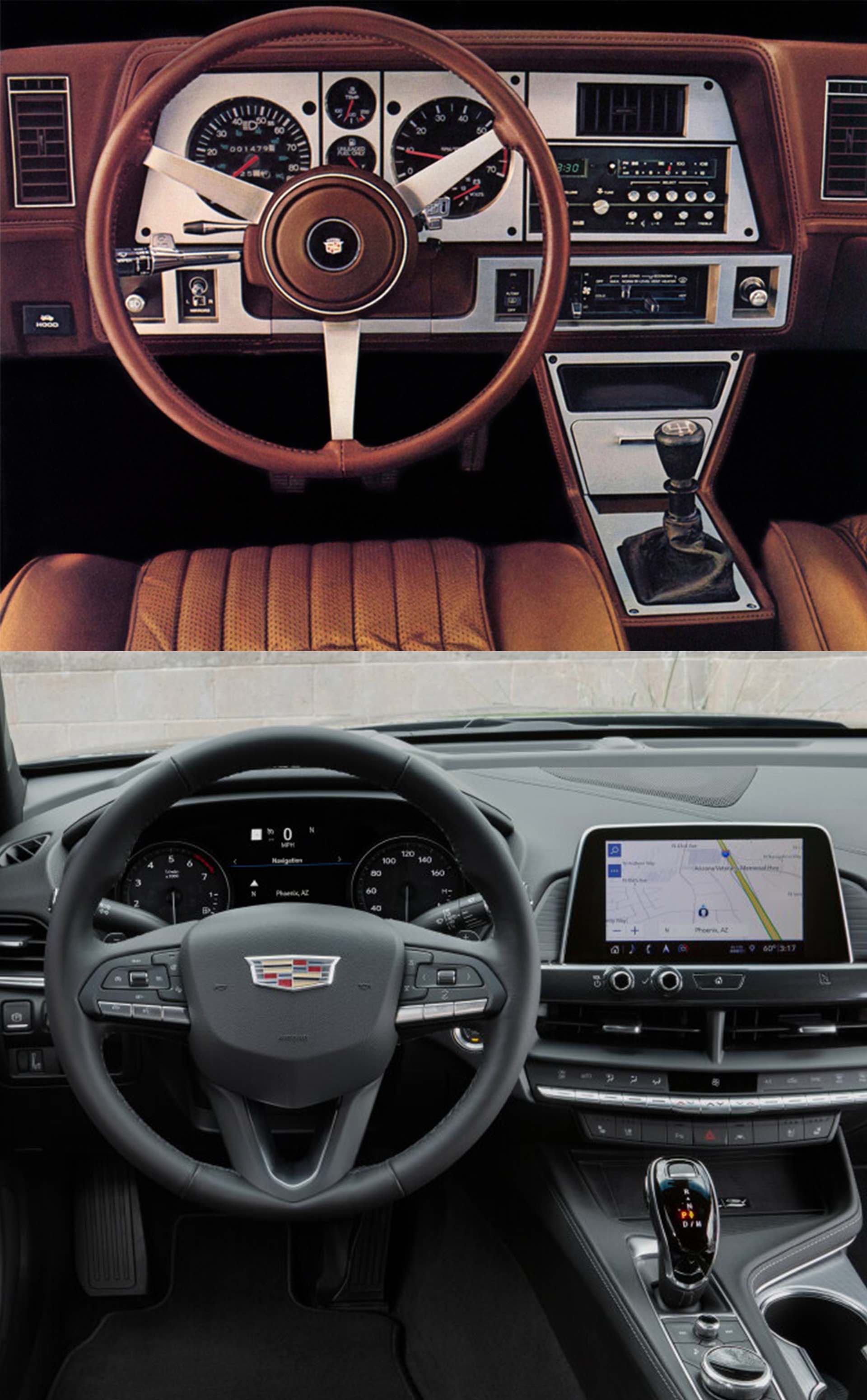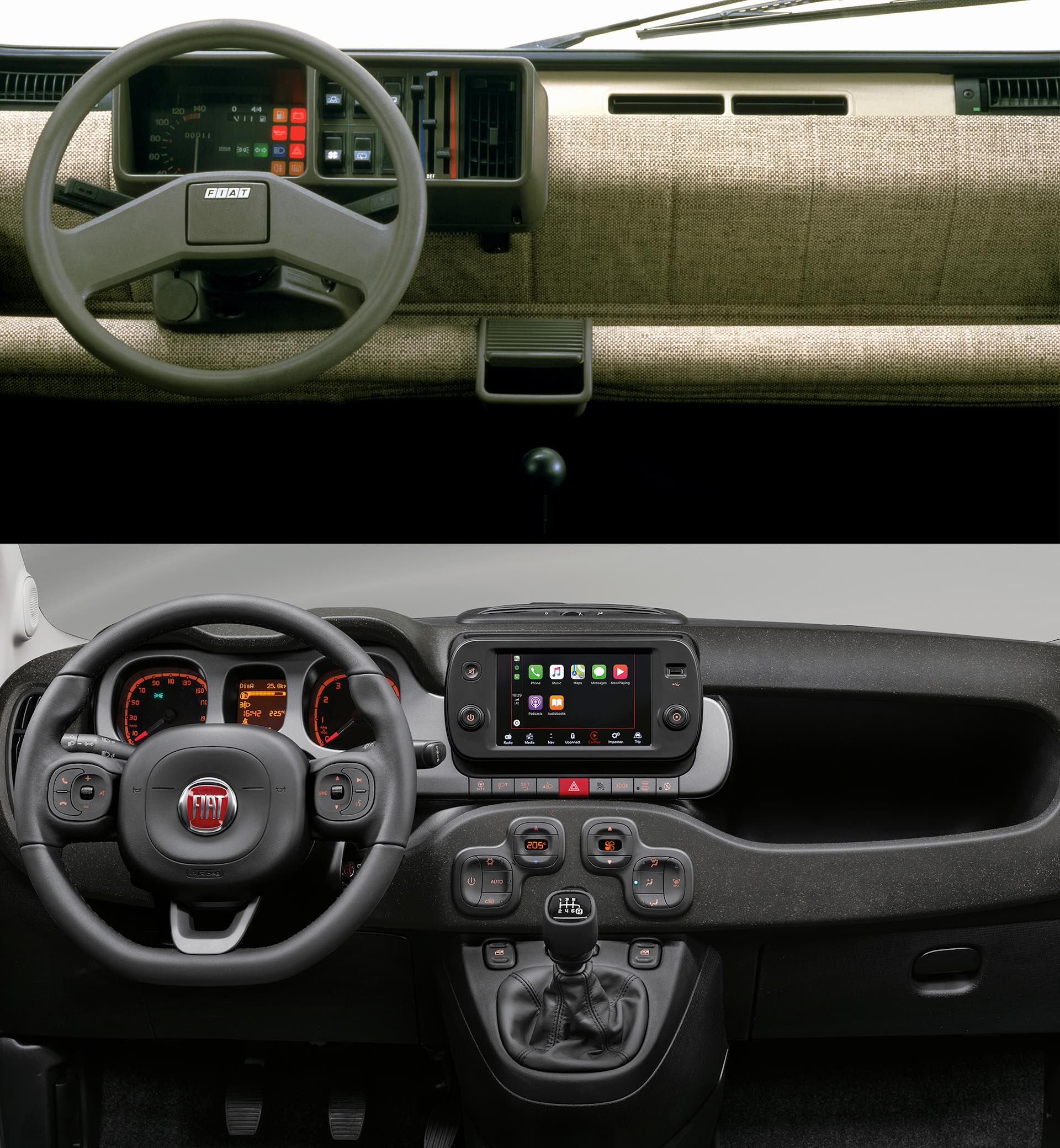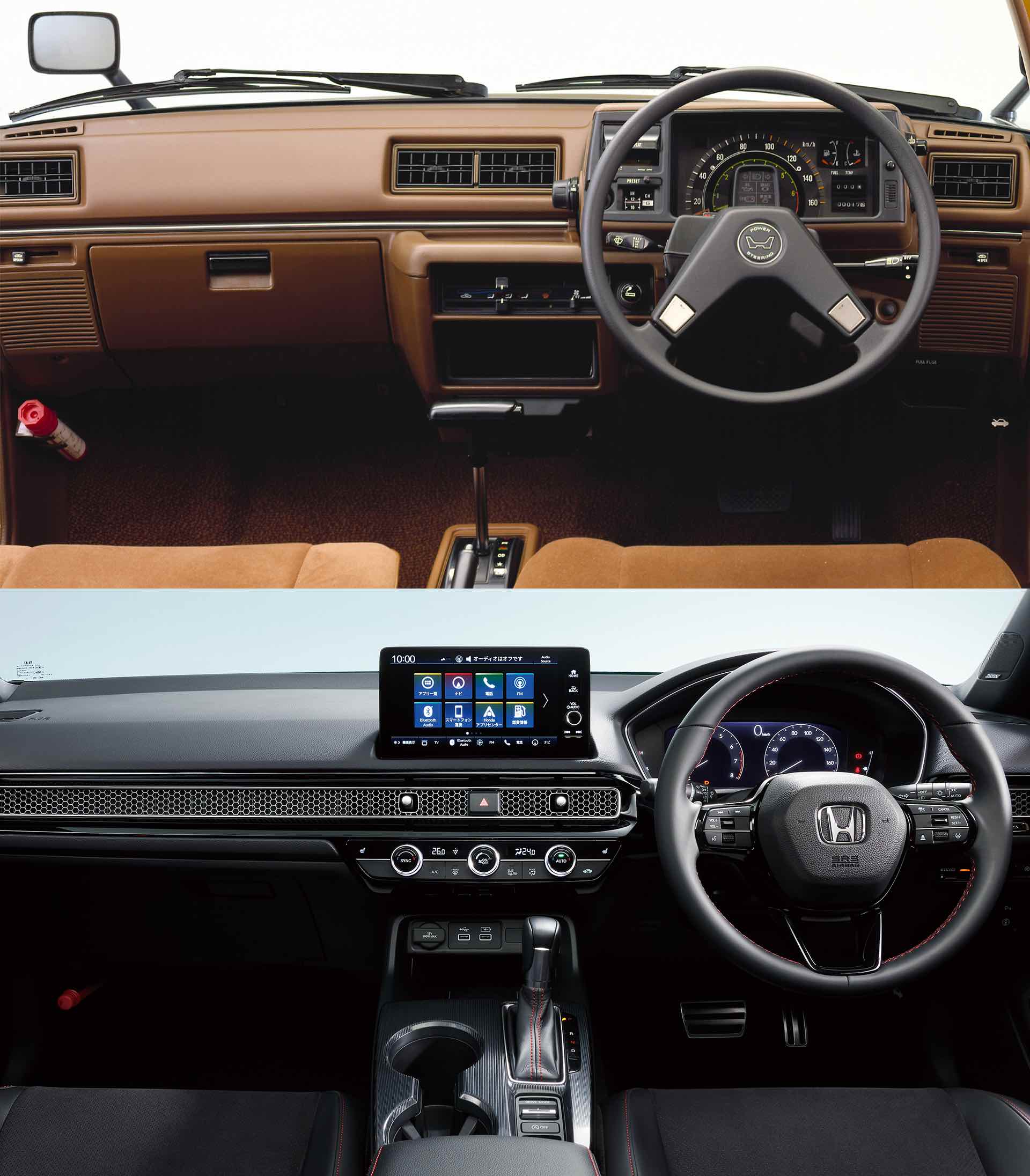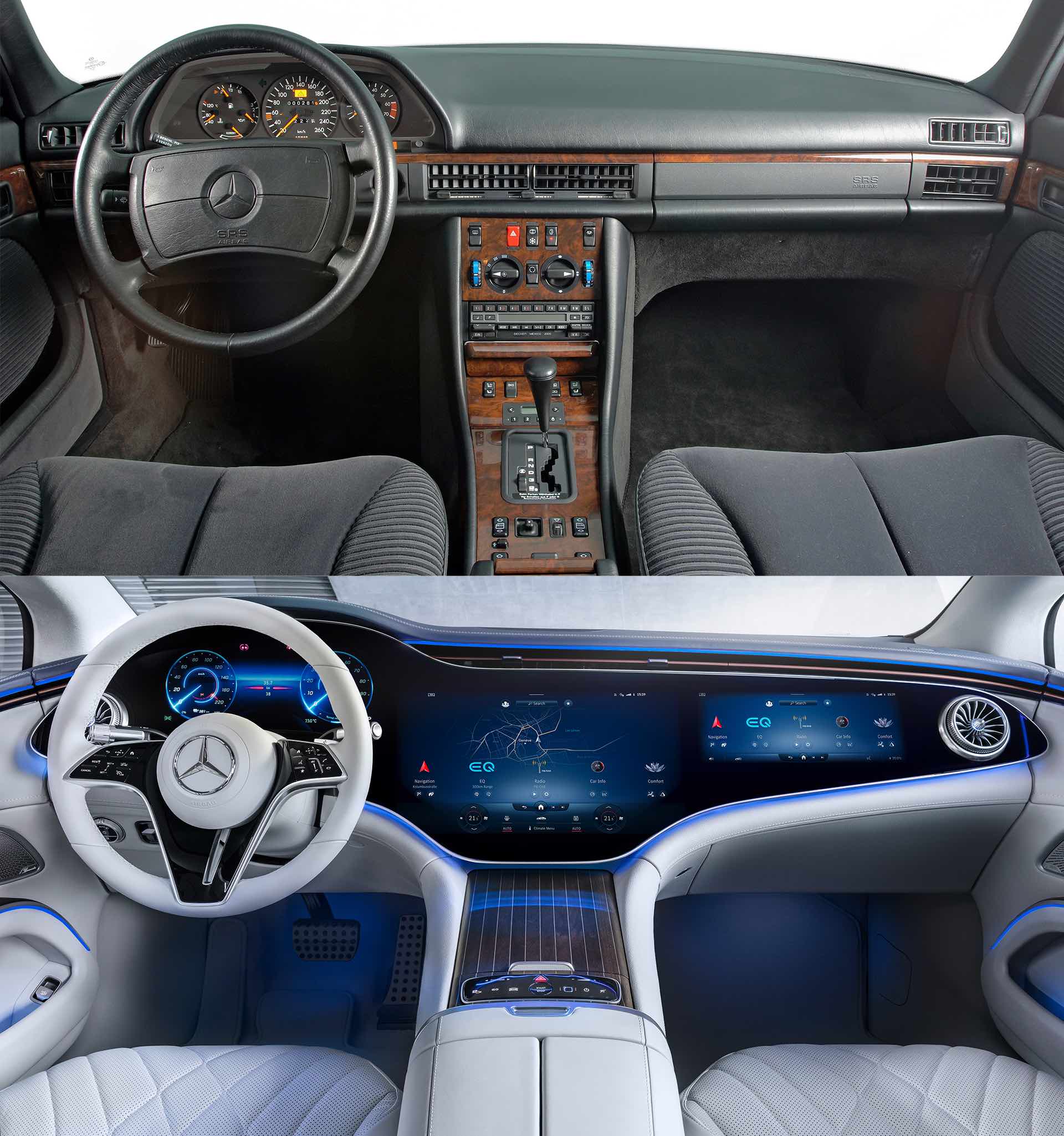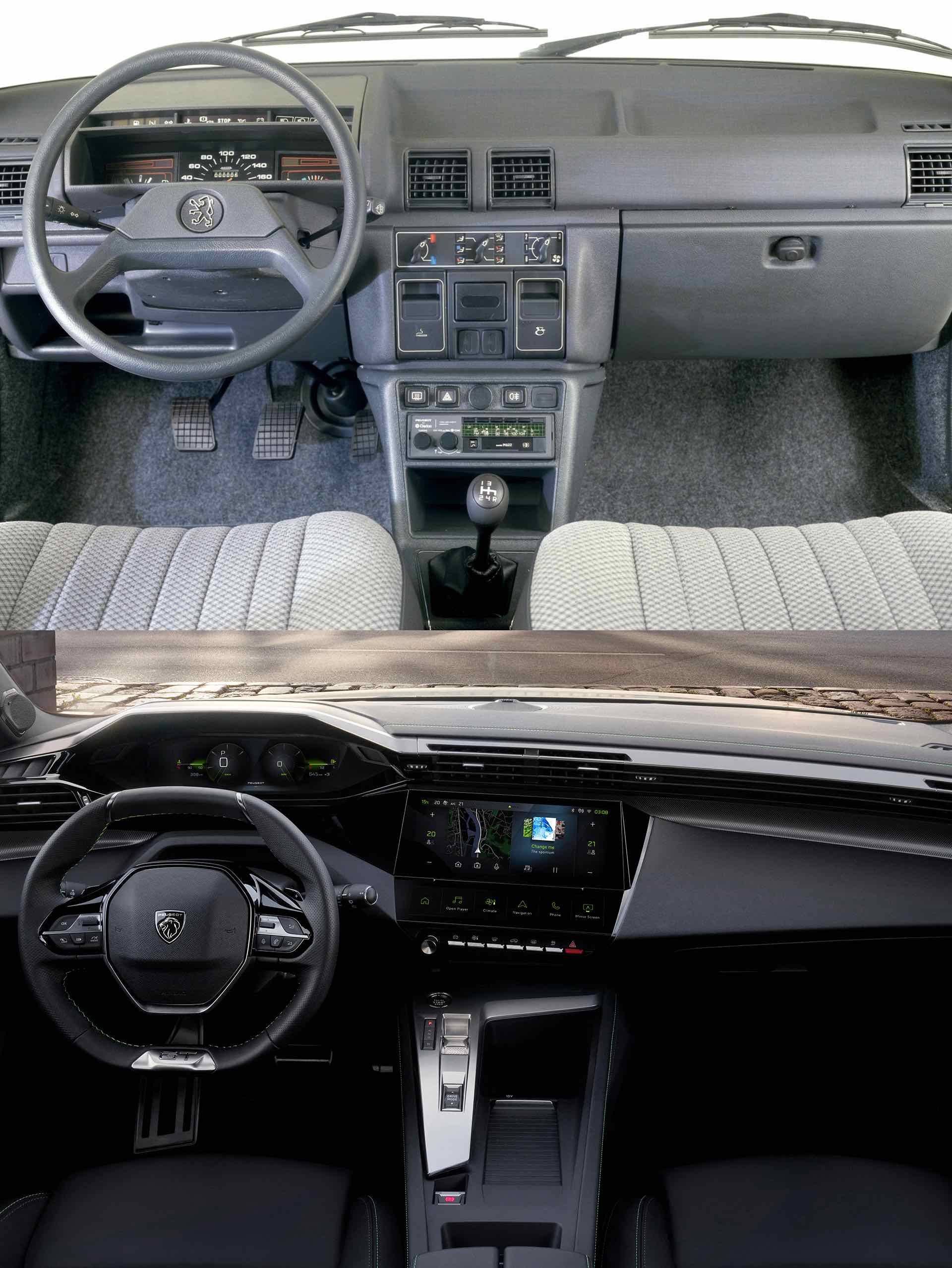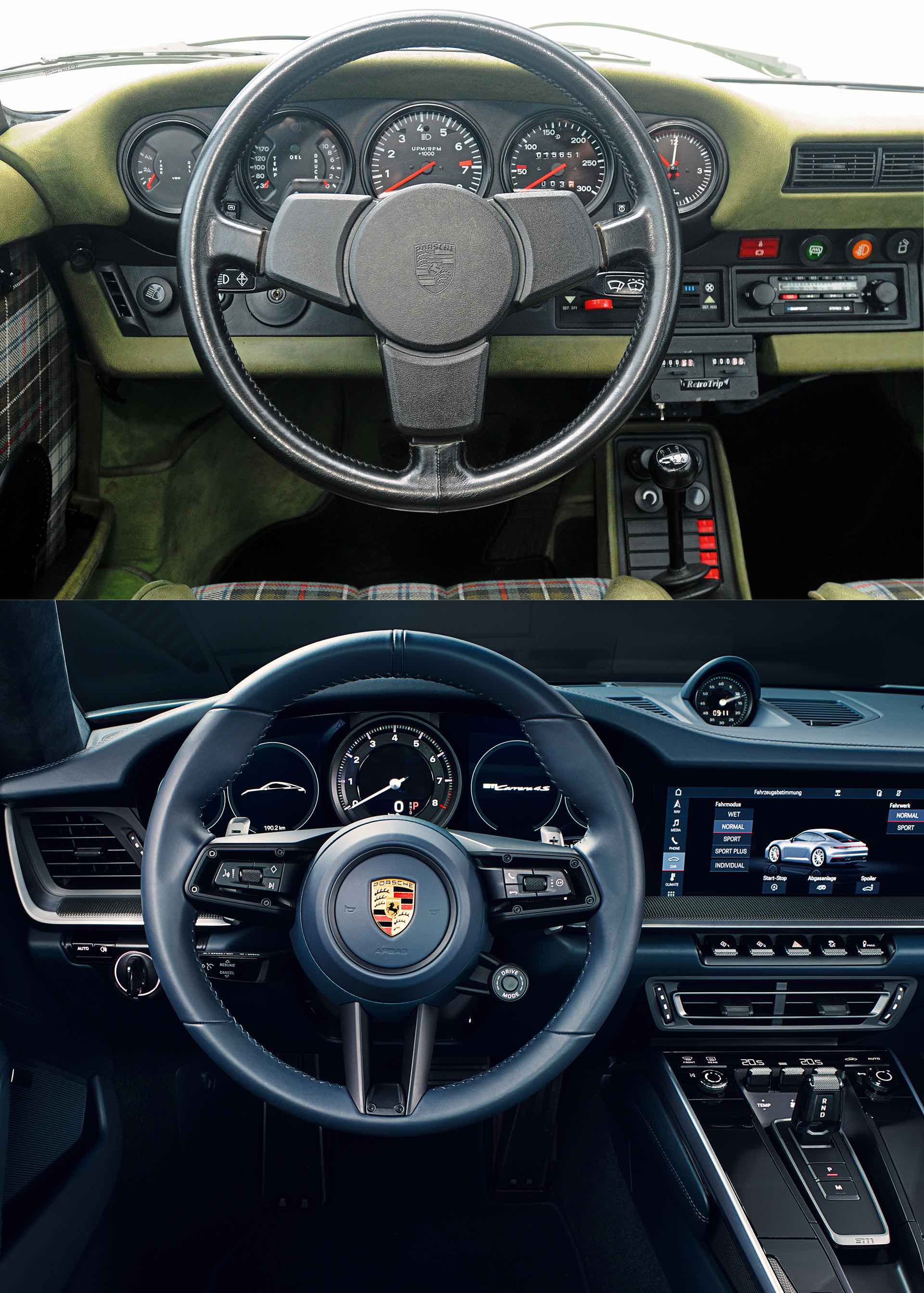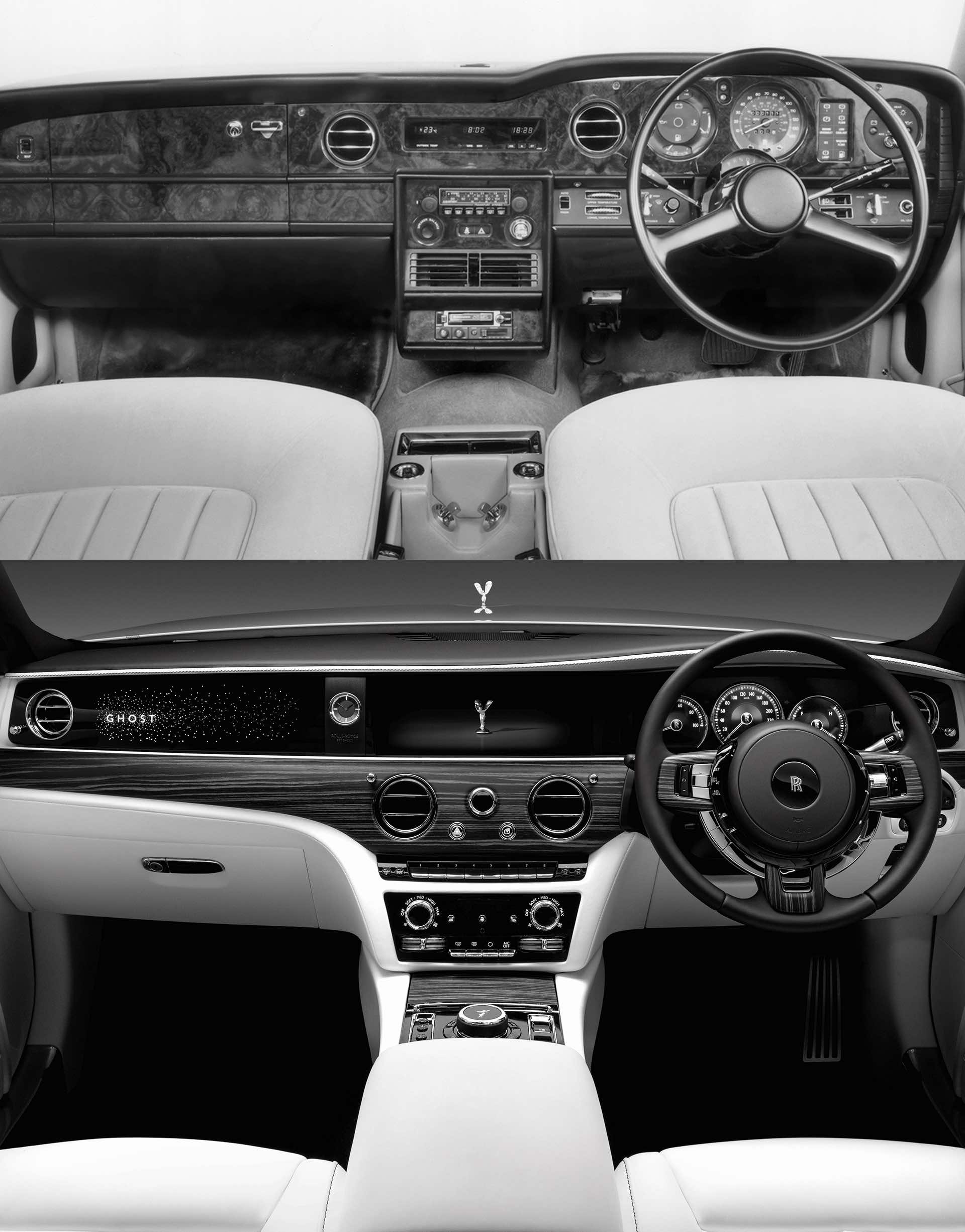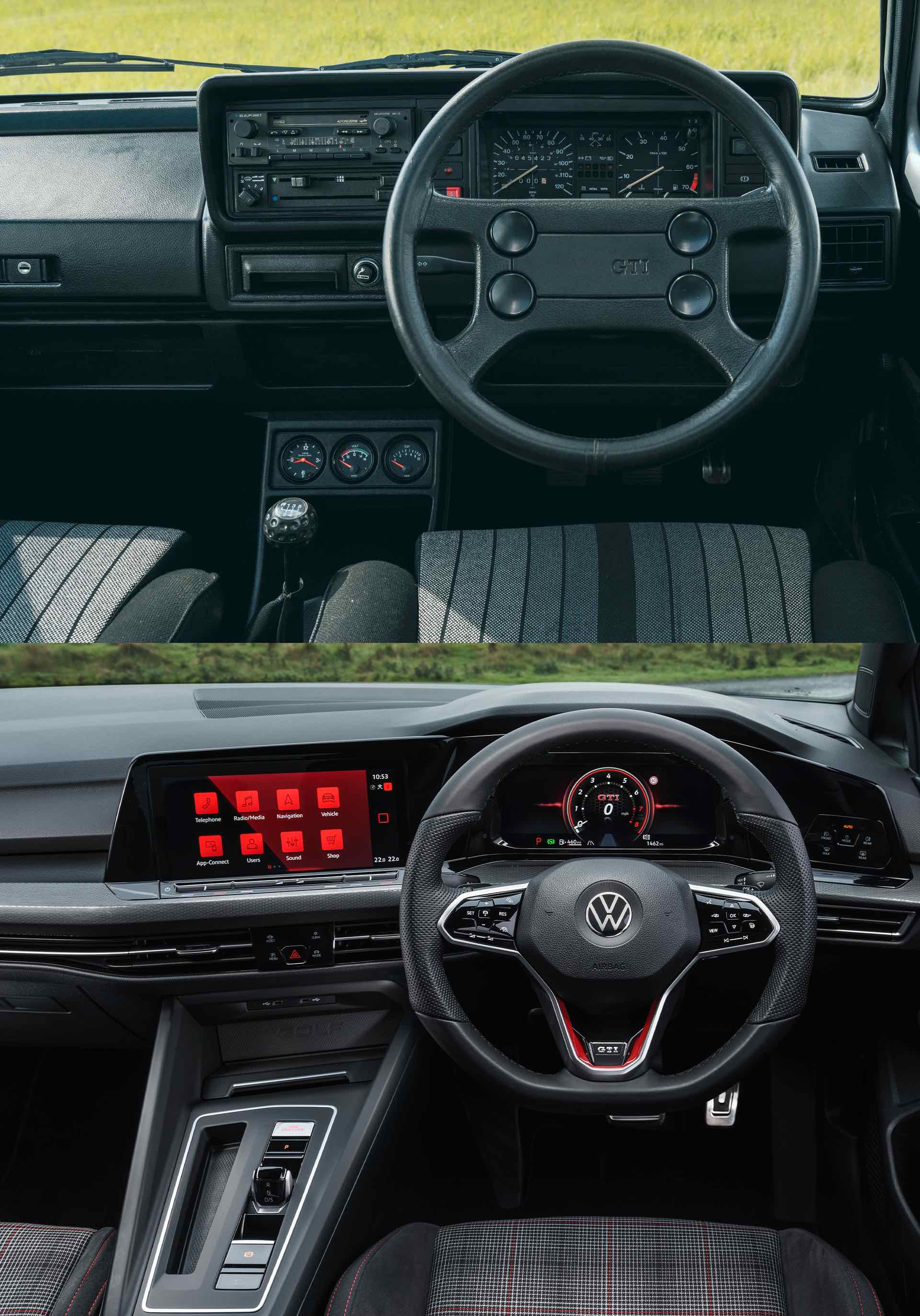Car design can be a fickle business, and some models change beyond recognition in the switch from one generation to the next.
But some carmakers are careful not throw the baby out with the bath water. Though massively wider, longer and much safer and more aerodynamic than the original 911, the current Porsche 992 is still clearly recognizable as a 911. And the styling of the Huracan and Aventador has clear links to the original 1971 Countach show car, if not the very first Lamborghinis of the early 1960s.
But what about car interiors? If you took 10 drivers from 40 years, whipped them through time to 2021 and put them in the modern equivalent of their 1980s rides, would they be able to see and feel the connection without the help of the badge on the steering wheel? Let’s compare 10 current cars with the ancestors.
BMW 3-Series
The original 1975 E21 3-Series was the first BMW with a dashboard shaped to give priority to the driver, and the E30 follow-up that appeared in 1982 refined that setup, moving the radio further up the console and taking on the now iconic instrument cluster that had first appeared on the E28 5-Series the year before.
Related: QOTD: What’s The Coolest Gauge Pack Of All Time?
Those dials are long gone, replaced by a digital gauge pack, and these days the steering wheel is actually in line with the center of the seat. But the air vents with their rotary wheel controls haven’t changed much, and the build quality is even more solid than it was back then.
Cadillac Cimarron And CT4
The Cimarron, Cadillac’s early 1980s attempt at a BMW-rivaling compact sports saloon, was based on the humble front-wheel drive Chevy Cavalier’s J-body platform and used its basic interior too.
It was also a sales bomb, so it’s not fairly obvious that Cadillac wasn’t going to be playing the retro card when it came to designing its modern day equivalent, the CT4. The strange thing is, the Cim’s metal-effect dashboard trim gives it a load more character than the bland CT4 has – though we know which one we’d rather drive.
Fiat Panda
The 1980 Panda was a brilliant bit of functional design from the pen of Giorgetto Giugiaro, and we really do mean functional. The baby Fiat had flat windows (including the front screen) to reduce built costs, and offered almost no concessions to luxury.
Touchscreens? That would have seemed like witchcraft to the driver of an original Panda, which didn’t even have a proper dashboard, owners having to make do with a rectangular box suspended above the steering column.
Honda Civic
The Honda Civic has gone all sensible for 2022, and that includes the interior, which ditches the old car’s messy, cheap-looking dashboard for something that wouldn’t look out of place in a premium German car.
But if you squint a bit, and ignore the fancy new tablet touchscreen, you can see echoes of the ’79-’82 Civic’s dashboard in the shape of the new one. And there’s one other key similarity: those shifters are both connected to CVT transmissions. Bring back the T-bar, we say.
Mercedes S-Class And EQS
The S-Class was always the first to get important new Mercedes technology, from anti-lock brakes and airbags, to radar parking sensors and key-card ignition.
These days the tech pioneer is arguably the new EQS sedan thanks to its electric powertrain and that spectacular optional triple-display Hyperscreen dashboard. Without that three-pointed star to help us though, your 1981 S-class driver would probably guess he’d stumbled into some Area 51 spacecraft rather than a future Mercedes.
Peugeot 305 And 308
Let’s be honest, Peugeot might have had the handling thing licked in the 1980s, but its interiors were awful. They looked ugly, felt cheap and squeaked and rattled like a mouse collecting for the Salvation Army. Just check out the position of the radio in this 305 sedan. It’s so low even your knee would have to crouch down to operate it.
Plenty has changed since then. The quality is seriously impressive for a non-premium brand and so is the sense of style in the latest 308. And with the instrument pack located above the rim of the weirdly small steering wheel, you can’t complain about having to take your eyes off the road.
Porsche 911
Until the water-cooled 996 replaced the 993 in 1998, 911 interiors had hardly changed at all. And neither had the abysmal ergonomics, which actually got worse as Porsche added more buttons.
The latest 911 has a large, raised central tunnel, which of course the ’81 car never had because there was no transmission routed to the front axle back then, a slick touchscreen media system, and mostly digital instruments. But it’s easy to see the connection between old and new, and having the ignition switch on the left of the steering column is an instant giveaway.
Rolls Royce Silver Spirit and Rolls Royce Ghost
It’s hard to believe that 40 years and a complete change of ownership separates these pictures. The modern Rolls Royce Ghost’s circular air vents with their organ stop controls would make a Silver Spirit owner teleported from 1981 feel right at home, though we’re not sure what he would make of the starlight headliner.
Volkswagen Golf GTI
Volkswagen’s game-changing cabin quality offensive didn’t happen until the late 1990s, so the interior of the 1981 Golf GTI was more purposeful than pretty. But there’s definitely common ground in the basic shapes of the dashboards.
What about the seats, though? VW actually switched from tartan to stripes in 1981 for the European GTI, but we’re guessing our 1980s driver would be familiar enough with the ’76-’80 GTIs to recognize the homage in the modern GTI’s upholstery.
KITT And Tesla Model S
Knight Rider made its TV debut in September 1982, and who could have imagined back then that 40 years later we’d actually be able to buy an American-made 200 mph car with a TV in the dashboard that drives by itself and comes equipped with a steering wheel that looks like it was butchered by the fire service trying to get the last driver out after a monster fender-bender. Michael Knight would love it.





